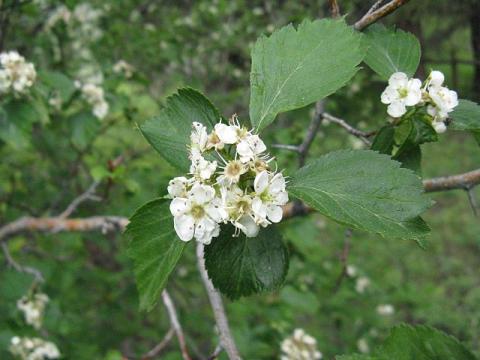
Image Credit: DANA KELLEY BRESSETTE
Scientific name: Native Hawthorn,
Identification: Deciduous thick leathery leaves, oval with 5-9 lobes and saw toothes margins. Flowers are white and do not smell attractive. Distinct from the invasive hawthorn, which has very deeply lobed leaves.
Growth: Large shrub or small tree up to 10 m tall with thorns. Grows in moist an open places.
Ecology: Native Hawthorn or Douglas Hawthorn provides year round services for wildlife. In the spring and summer birds use the thickets for nesting and brooding. Moths, like pyloyphemus moth, unicorn caterpiller, fall webworm, both the western and forest tent caterpiller, european leafroller, apple and thorn skeletonizer, bagworm, eyespoted bud moth, and lesser apple worm, all lay eggs in the hawthorn thickets. In the fall when the fruits dry, they provide forage for other birds.

Image Credit: Nadiatalent